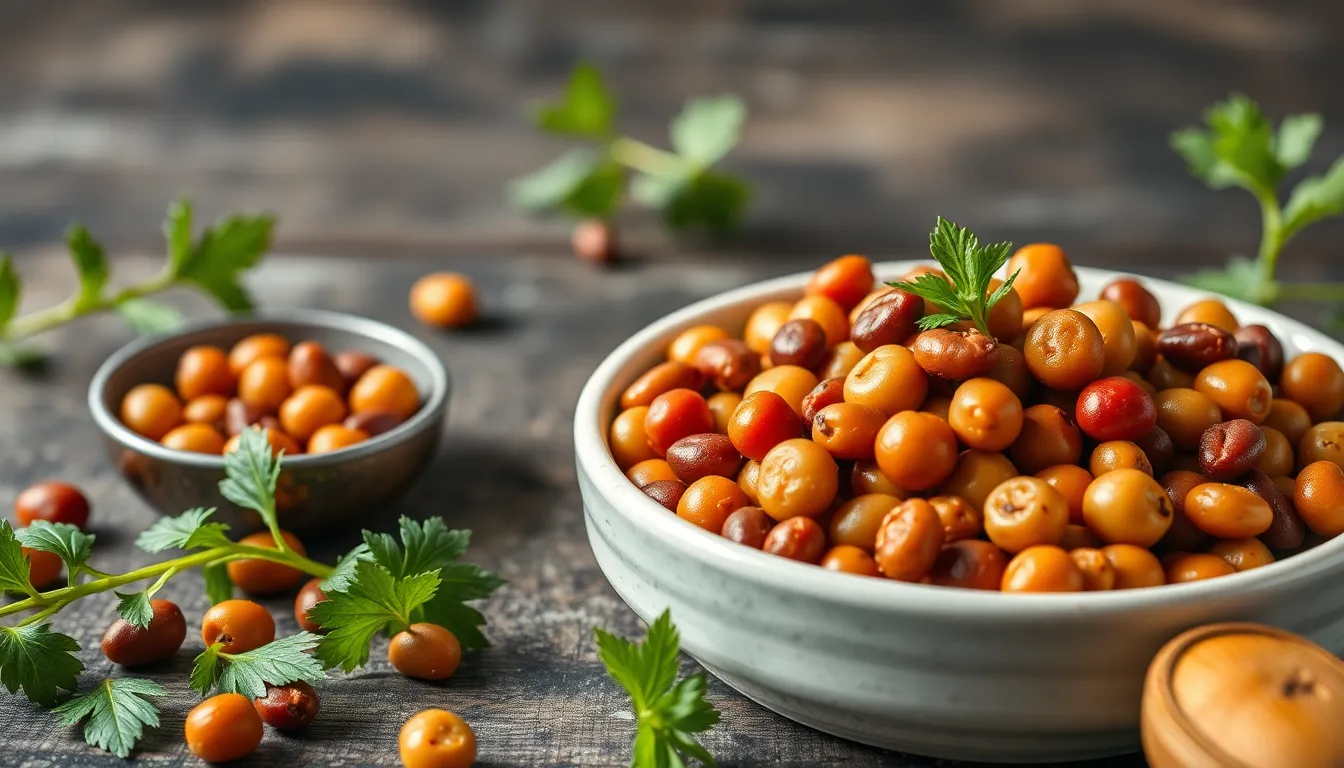The Power of Legumes: Why You Should Add Them to Your Diet
Introduction
Legumes are nutrient-dense foods that have been a staple in diets around the world for centuries. These versatile plants include beans, lentils, peas, and chickpeas, which are rich in essential nutrients, making them an important addition to a balanced diet. Understanding the myriad benefits of legumes not only encourages healthier eating habits but also promotes sustainable food choices. In this article, we will explore what legumes are, their health benefits, cooking techniques, and how to easily incorporate them into your daily meals.
Section 1: What Are Legumes?
Legumes are a class of vegetables that belong to the family Fabaceae. They are characterized by their ability to fix nitrogen in the soil, which enhances soil fertility. The edible seeds of these plants are commonly consumed as food.
Types of Legumes
- Beans: Includes varieties like black beans, kidney beans, and pinto beans.
- Lentils: Available in colors such as green, red, and brown.
- Peas: These can be fresh, dried, or split.
- Chickpeas: Often found in Mediterranean and Middle Eastern cuisines.
Nutritional Profile of Legumes
Legumes are a nutritional powerhouse, offering a myriad of health benefits. They can be a primary source of protein for vegetarians and vegans and are packed with essential vitamins and minerals.
Section 2: Health Benefits of Legumes
Subsection 2.1: Nutritional Advantages
Legumes are celebrated for their impressive nutritional profile:
- High Protein Content: Legumes provide a substantial amount of protein, making them an excellent meat alternative.
- Rich in Fiber: They promote digestive health and help regulate blood sugar levels.
- Low in Fat: Most legumes are low in fat, making them a heart-healthy food choice.
- Micronutrients: Legumes are rich in essential vitamins and minerals, including folate, iron, and potassium.
Subsection 2.2: Disease Prevention
Incorporating legumes into your diet can help prevent various diseases:
- Heart Health: Regular consumption of legumes has been linked to lower cholesterol levels and reduced risk of heart disease.
- Diabetes Management: The high fiber content helps in regulating blood sugar levels, making legumes beneficial for those with diabetes.
- Weight Control: Legumes are satiating and can help in managing weight by reducing overall calorie intake.
- Cancer Prevention: Some studies suggest that a diet high in legumes may reduce the risk of certain cancers.
Subsection 2.3: Sustainable Eating
Legumes not only benefit our health but also contribute to sustainable eating:
- Environmental Benefits: Legumes require less water and land compared to animal protein sources, making them more sustainable.
- Comparison with Animal Protein Sources: Legumes produce fewer greenhouse gases than livestock, making them an eco-friendly protein choice.
Section 3: How to Incorporate Legumes into Your Diet
Subsection 3.1: Cooking Techniques
Cooking legumes can be easy and rewarding. Here are some techniques to consider:
- Soaking and Cooking Dried Legumes: Soaking dried legumes overnight can reduce cooking time and enhance digestibility.
- Canned versus Dried Legumes: Canned legumes are convenient and ready-to-use, while dried legumes are more economical and can be used in a variety of dishes.
- Easy Cooking Methods: Consider using a pressure cooker or slow cooker for effortless preparation.
Subsection 3.2: Recipe Ideas
Here are some delicious ways to incorporate legumes into your meals:
Breakfast: Legume-Based Smoothies
Add cooked lentils or chickpeas to your morning smoothie for an extra protein boost.
Lunch: Chickpea Salad or Lentil Soup
Prepare a refreshing chickpea salad with veggies and a light dressing, or enjoy a hearty bowl of lentil soup.
Dinner: Black Bean Tacos or Lentil Curry
Fill corn tortillas with seasoned black beans and toppings, or savor a warm, spiced lentil curry with rice.
Snacks: Roasted Chickpeas
For a crunchy snack, roast chickpeas with olive oil and your favorite spices until crispy.
Subsection 3.3: Storage and Preparation Tips
To maintain the quality of your legumes, consider the following storage and preparation tips:
- Best Practices for Storing Dried Legumes: Store in an airtight container in a cool, dark place.
- Best Practices for Storing Canned Legumes: Keep canned legumes in a cool pantry, and use them before the expiration date.
- Meal Prep Ideas Using Legumes: Cook a large batch of legumes at the start of the week for easy additions to meals.
Section 4: Nutritional Comparison Table
| Type of Legume | Protein (g) | Fiber (g) | Calories | Key Vitamins |
|---|---|---|---|---|
| Black Beans | 15g | 15g | 227 | Folate, Iron |
| Lentils | 18g | 16g | 230 | Folate, Magnesium |
| Chickpeas | 15g | 12g | 210 | Iron, Manganese |
| Peas | 8g | 8g | 62 | Vitamin K, Vitamin C |
Section 5: Common Myths About Legumes
- Myth 1: Legumes are hard to digest. Fact: Soaking and cooking legumes properly can mitigate digestion issues.
- Myth 2: Legumes lack protein quality. Fact: When combined with grains, legumes provide complete protein profiles.
- Myth 3: Legumes are too high in carbohydrates. Fact: The carbohydrates in legumes are primarily complex carbohydrates, which are beneficial for health.
Conclusion
Incorporating legumes into your diet can provide numerous health benefits, from improved heart health to sustainable eating practices. Their versatility in the kitchen makes them an easy addition to any meal. I encourage you to experiment with different types of legumes and discover how they can enhance your dishes. Don’t forget to share your favorite legume recipes in the comments section!
Additional Resources
- Link to reputable studies on legumes
- Suggested cookbooks focused on legumes
- Websites for purchasing high-quality legumes
Final Thoughts
My journey with legumes has transformed my approach to cooking and eating. I have discovered how satisfying and delicious these foods can be, and I invite you to share your experiences with legumes. Together, we can celebrate the remarkable power of these tiny yet mighty seeds!




